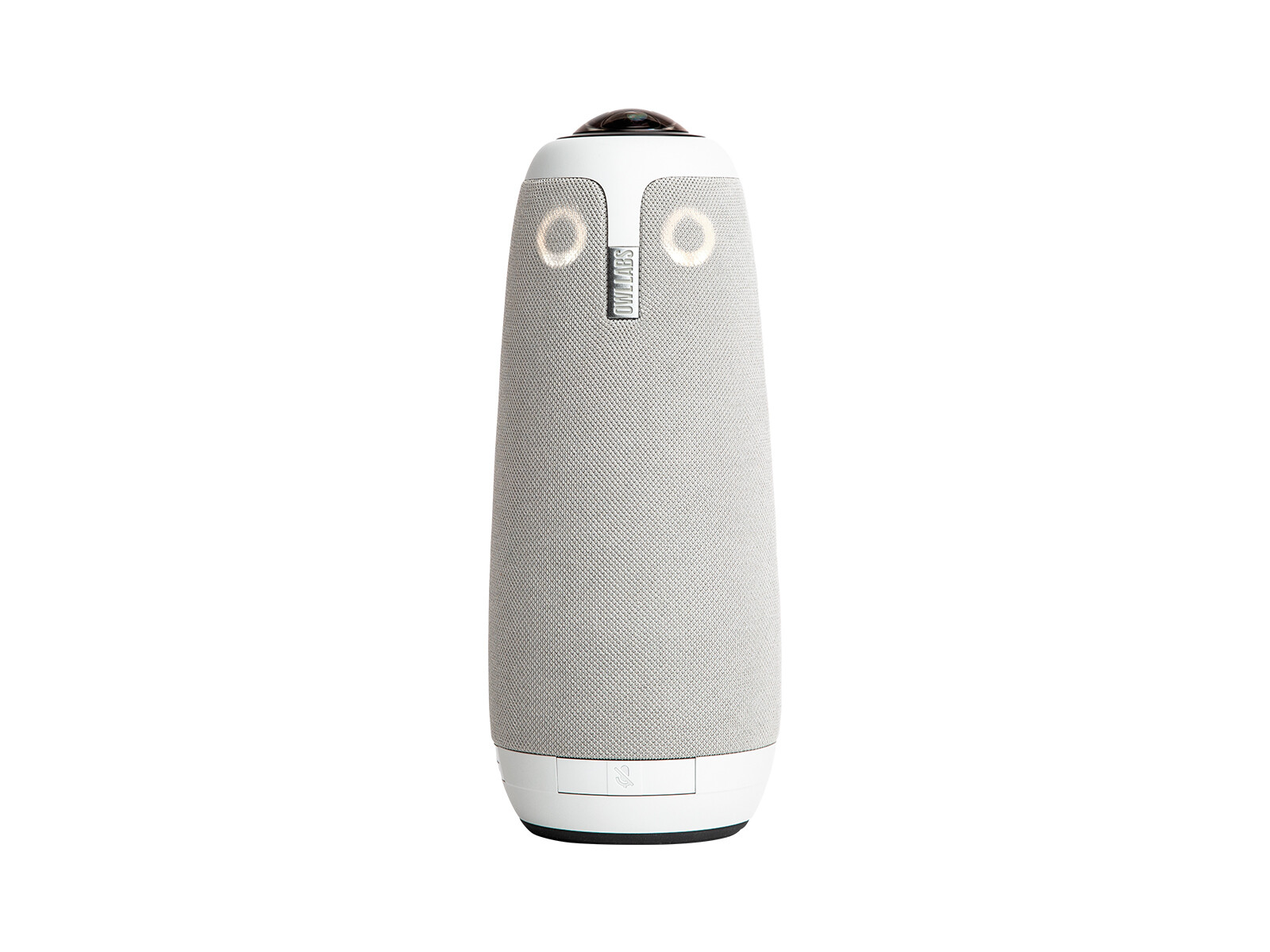































£973.10*
- Resolution 1920 x 1080 Full HD
- Field of view 360°


Product information
Create a compelling and immersive hybrid meeting experience in any room, regardless of its size or configuration, with the intelligent 360° camera, which is designed to keep learning. Together with the microphone and speaker, which also learn over time, you can ensure that every participant is heard clearly, whether they are in the same room or connected remotely.
The Meeting Owl 3's optimised Owl Intelligence System (OIS) goes one step further by providing smarter, faster and more dynamic collaboration features. The advanced algorithms and software solutions enable smooth integration with other communication tools and offer high customisability for different meeting scenarios. The camera and microphone work hand in hand to ensure that every movement and word in the room is captured, with the technology constantly learning and adapting to provide the best performance.
Experience the following highlights:
- Full HD resolution with 360° field of view
- 8 omnidirectional beamforming smart microphones
- Three integrated speakers for 360° coverage and clear sound in the room
- Connect with multiple cameras and create one big picture
- Compatible with all popular Conferencing platforms
Curtain up for the ultimate hybrid collaboration tool
Capture everything in your environment with a sophisticated 360-degree camera that not only captures images, but also the mood and dynamics of the room. This camera works in conjunction with a sensitive microphone that accurately records every whisper, every laugh and every word. The microphone is calibrated to pick up sounds from all directions, allowing for authentic and lifelike sound reproduction.The speaker completes the trio by providing a clear and powerful sound that fills any room with vibrancy. It is tuned to the specific acoustic requirements of the room and thus offers a customised sound experience.
Together, these three components - the 360-degree camera, the microphone and the speaker - provide a truly breathtaking experience for all participants. Whether it's a conference, a virtual meeting or a live broadcast, participants will feel as if they are physically present in the room.
The integration of image, sound and spatial experience creates an immersive atmosphere that breaks down the barriers of distance and creates a real connection between people. The technology captures not only what is happening in the room, but also the emotions and nuances of communication, creating an interactive and engaging experience that captivates participants.
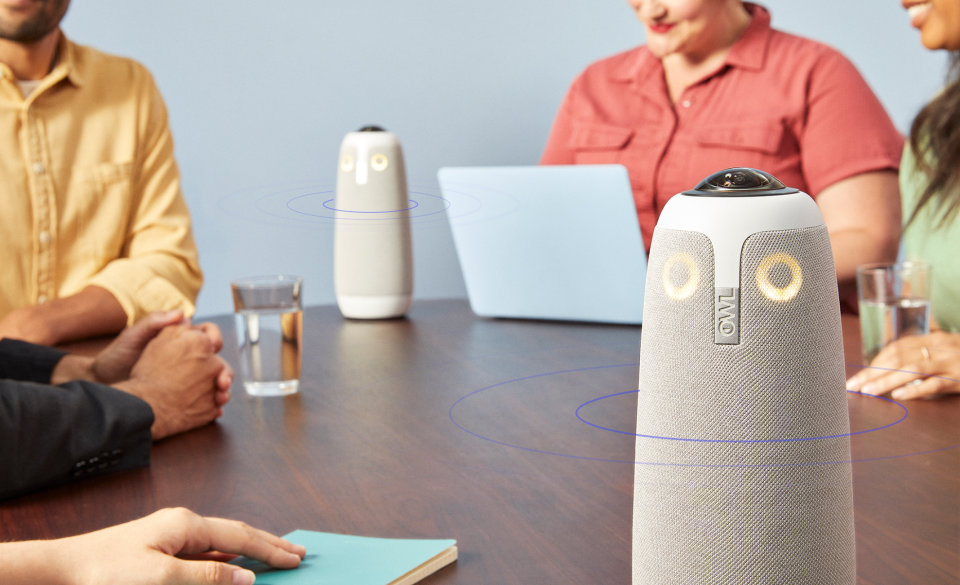
Collaboration feels more natural
The device, which is strategically located in the centre of the room, is equipped with advanced technology that intelligently has the ability to always zoom in on the person speaking. By focussing on the active speaker, the system creates a realistic face-to-face experience for both physically present and remotely connected participants.This process of zooming in is controlled by sophisticated algorithms and sensor technology that can recognise speech, gestures and even the direction of participants' gaze. By precisely analysing these factors, the system recognises who is speaking and adjusts the camera accordingly. This automatic adjustment is seamless and in real time, so participants barely notice that the technology is working in the background.
Positioning in the centre of the room allows for optimal coverage and visibility of all participants, and the intelligent zoom function ensures that each individual can be seen clearly and distinctly. This encourages natural interactions and conversations as if everyone was in the same room, even when connecting over long distances.

Flexible coverage for any room
Coupling two Meeting Owls, the state-of-the-art devices specifically designed for conferences and meetings, provides innovative technology that adapts to you and your space. This intelligent adaptability allows for optimised communication and interaction in any environment, whether in small meeting rooms or large conference halls.The seamless technology built into the Meeting Owls detects the specific acoustics and room conditions and adjusts the camera, microphone and speaker accordingly. This automatic adjustment ensures that the audio and video quality is always at the highest level so that all participants can see and hear clearly.
The pairing of the two devices enables even more comprehensive coverage of the room by working together and complementing each other. When a person speaks, the system can recognise which device is best positioned to focus on the person and then control it accordingly. This creates a dynamic and engaging experience that conveys the natural flow of conversation.
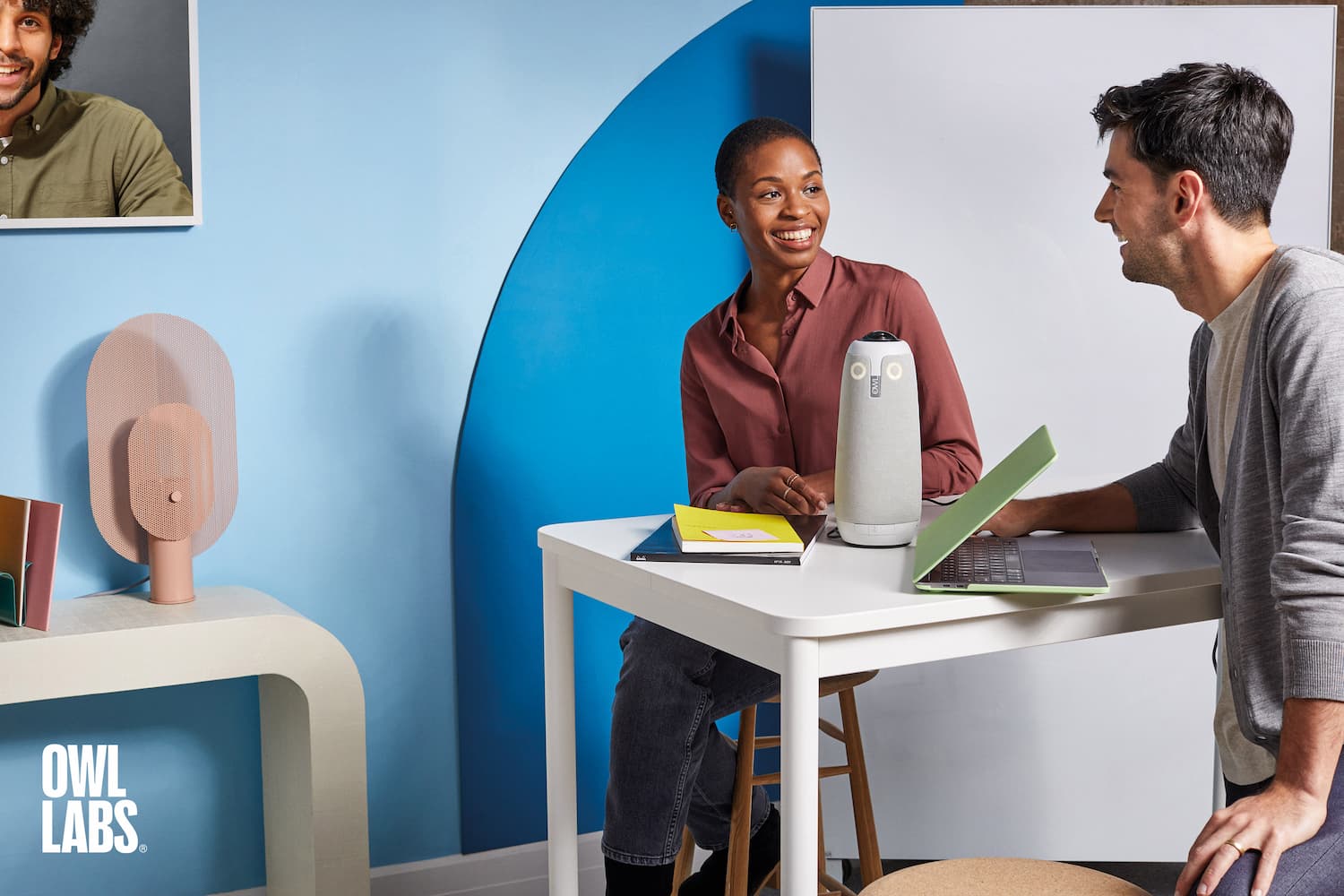
The universal device for team collaboration
The Meeting Owl 3 uses a combination of a 360-degree camera, powerful microphones and intelligent algorithms. The 360-degree camera captures the entire room and enables a visual representation that includes every participant. The camera can automatically zoom in on the person speaking, creating a seamless and natural experience that encourages interaction.The microphones are equally sophisticated and can pick up voices from different directions, even in a busy room. They filter out background noise and highlight the human voice to enable clear and intelligible conversations.
The underlying algorithms and software are at the heart of Meeting Owl 3, continuously analysing the visual and audio information and controlling the hardware to suit the needs of each meeting. This includes the adjustment of camera and audio settings as well as integration with other conference tools.
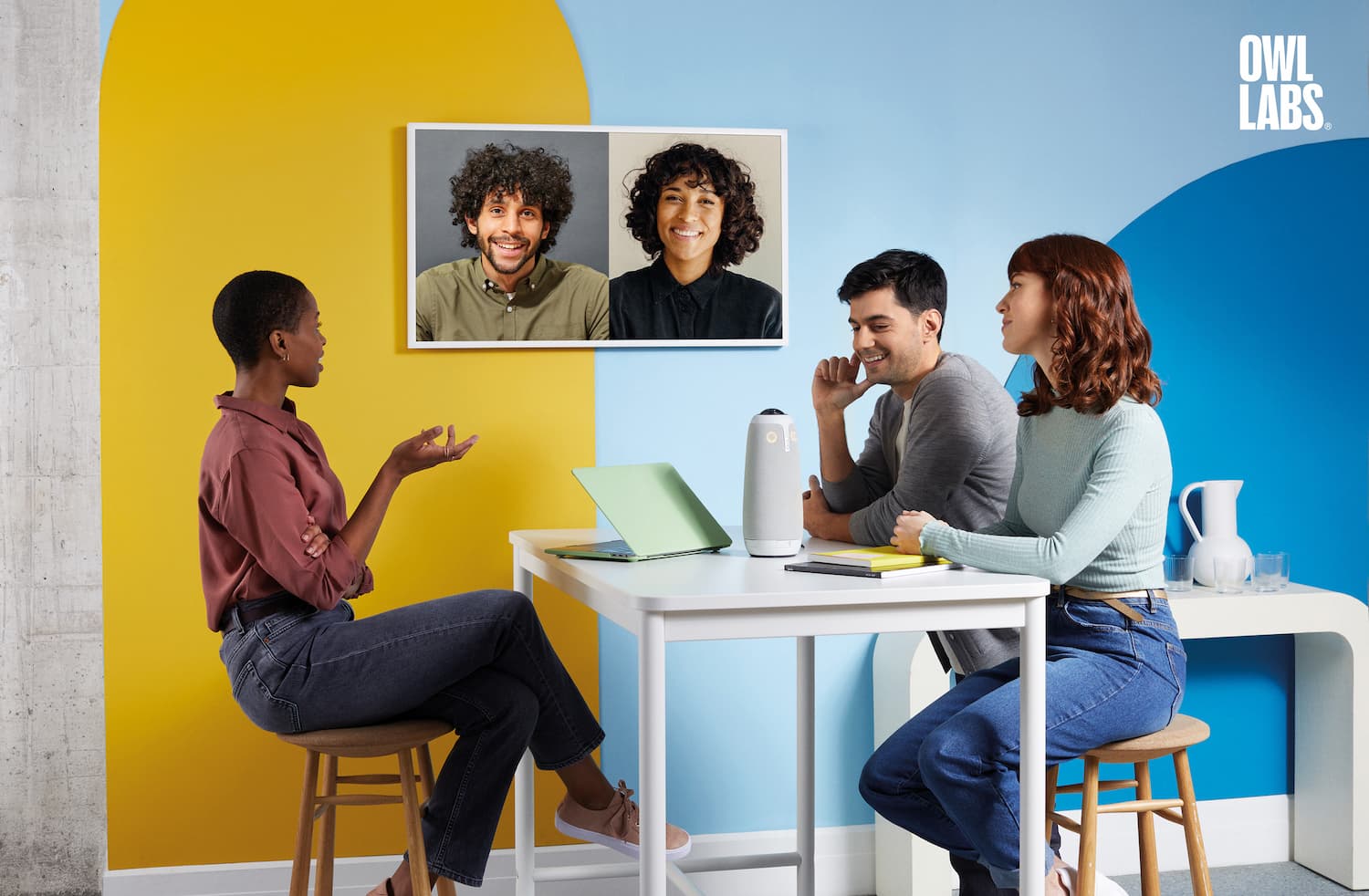
See the whole room
The 360-degree panoramic camera, a key element in modern video conferencing systems, is designed to provide a comprehensive view of the entire room. With an impressive coverage radius of 3 metres, it is able to clearly capture even distant details or people in a larger room.The camera operates at a high resolution of 1080p, which means that the images it delivers are of a remarkable clarity and sharpness. The full HD resolution ensures that every little detail is visible, from participants' facial expressions to the documents on the table.
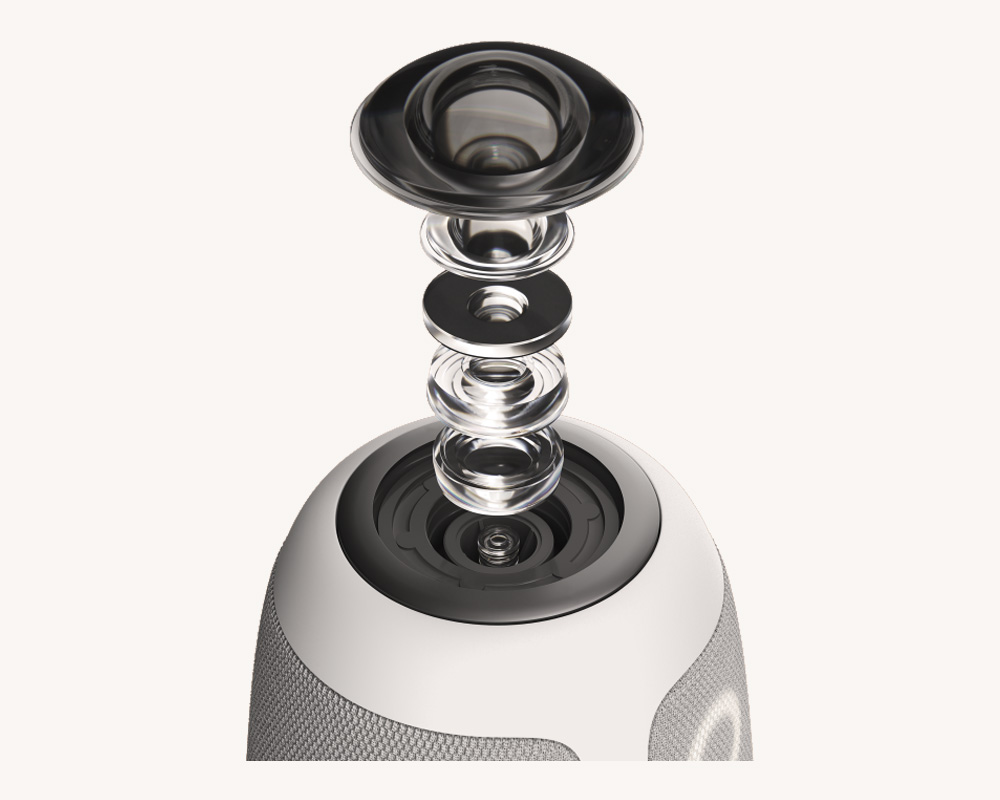
Make yourself heard
The audio pickup radius of the microphone is a crucial aspect that is designed to ensure seamless and clear communication during meetings. With an impressive pick-up radius of 5.5 metres, this microphone goes far beyond the norm.
This wide range enables it to pick up voices from all corners of the room, even in large and spacious rooms where participants might be spread out over a larger area. The microphone not only picks up the loud and clear voices, but also quieter tones and nuances in communication, which can often be important for understanding and empathy in conversation.
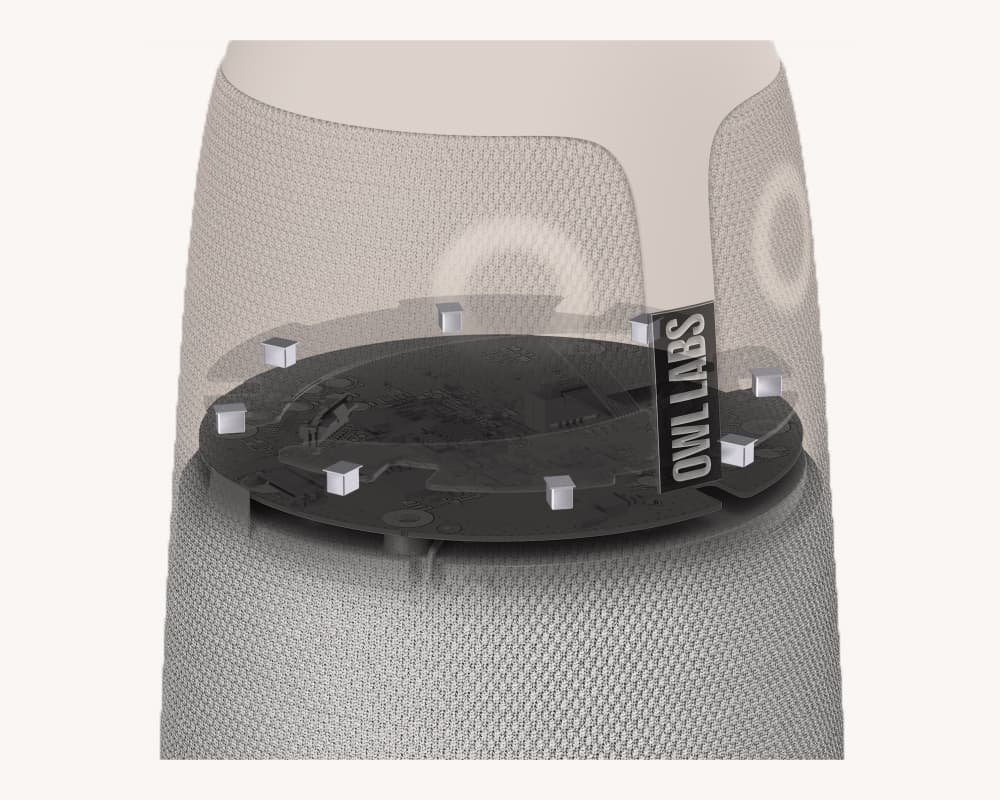
Understand everything that is being said
Hear external team members loud and clear from all areas of the room with the 360° triple speaker.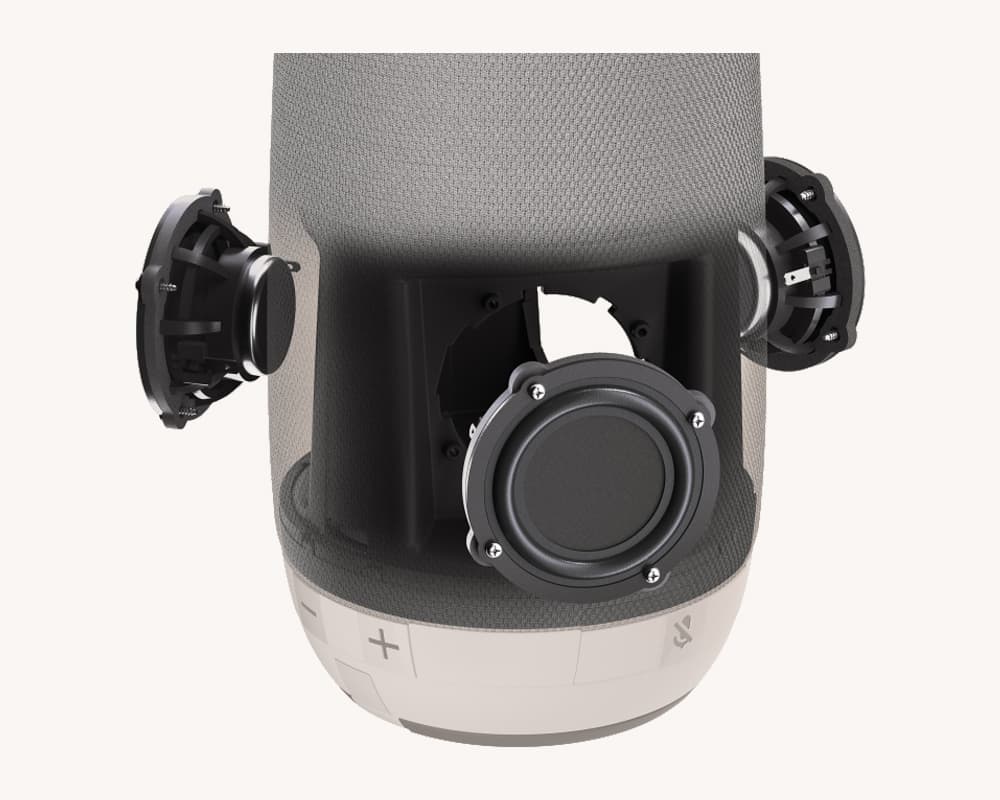
Our Owl Intelligence System gets smarter over time
Behind the dynamic features of all Owl Labs devices is the Owl Intelligence System, our proprietary AI-driven software that is regularly updated to make collaboration even more immersive and inclusive.
Owl Connect
Connects multiple Owl Labs devices to support meeting rooms of any size and budget. By placing cameras from 90cm to 2m away from anyone in the room, you can deliver a truly immersive experience to external participants. Effortlessly extend the audio recording range to 13 m and the video recording range to 9 m by having two Meeting Owl 3s working together as one unit.
Presenter Enhance
Tracks the active presenter so remote participants can follow the discussion.
Technical data
| Name | Owl Labs Meeting Owl 3 Premium Camera with 360° camera, microphone and speaker Conference Camera |
|---|---|
| Article number | 1000025433 |
| GTIN/EAN | 0850022203220 |
| Manufacturer SKU | MTW300-2000 |
| Model name | Meeting Owl 3 Premium Camera with 360° camera, microphone and speaker |
| Brand | Owl Labs |
| Product Type | Conference Camera |
| Application | Small rooms |
| Resolution | 1920 x 1080 Full HD |
| Focus type | Manual & automatic focus |
| Field of view | 360° |
| Inputs | 1x USB-C |
| Features | Microsoft Teams , Zoom |
| Product width | 11.1 cm |
| Product height | 27.3 cm |
| Product depth | 11.1 cm |
| Weight | 1.2 kg |
| Colour | White |
| Condition | New |
| Warranty | 24 Month |
| Warranty type | Bringin service Service and support information |
Product safety
| Company |
|---|
| Owl Labs |



